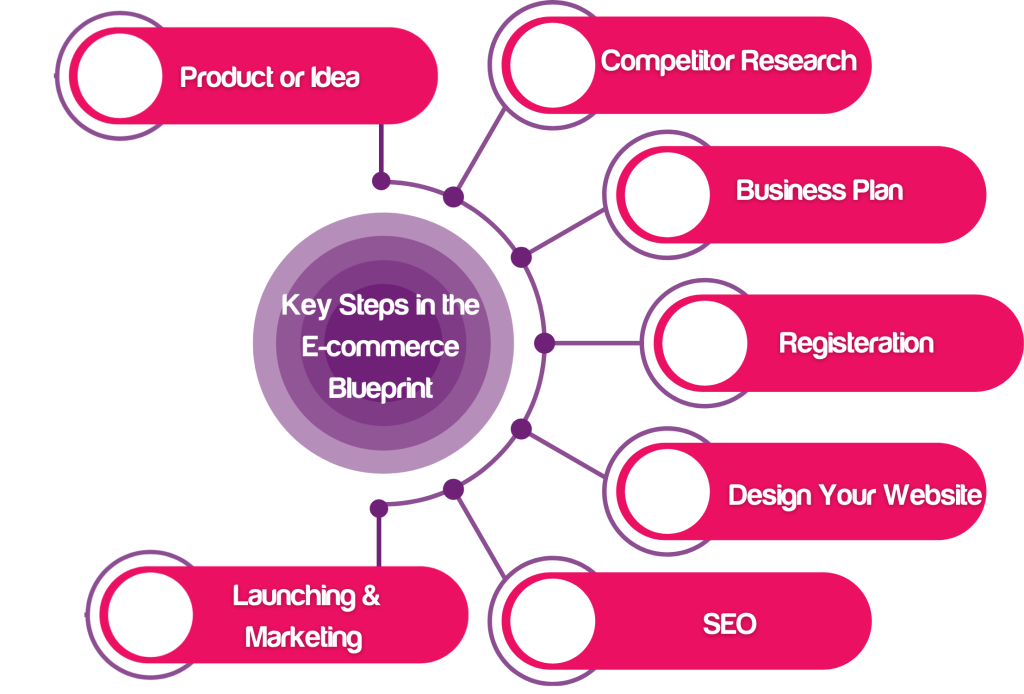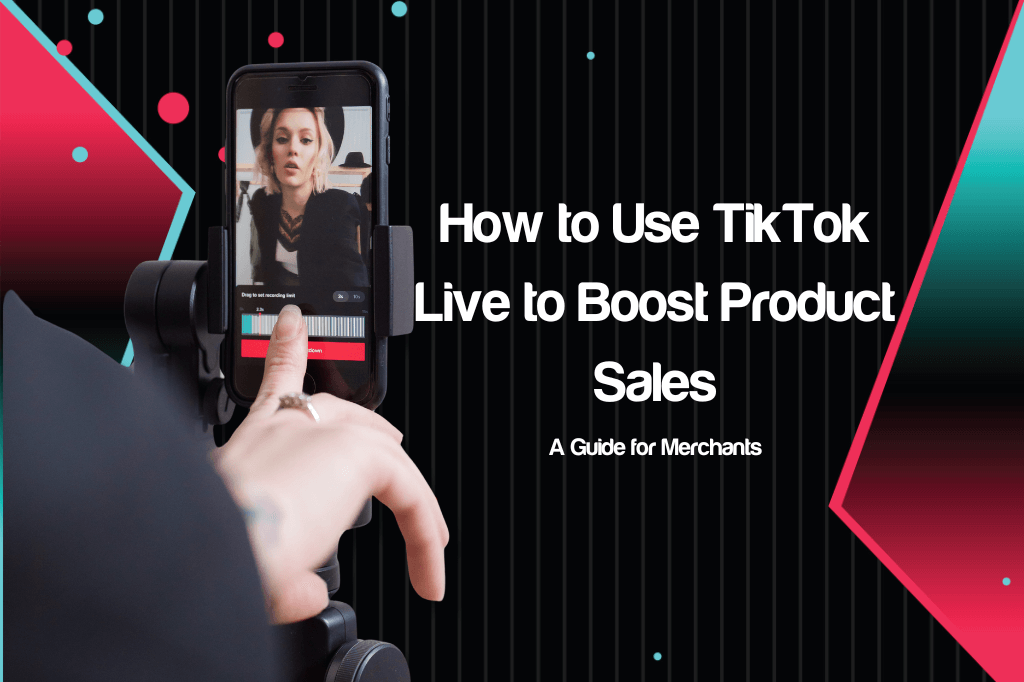The future of e-commerce is incredibly bright, but starting an online business involves more than just setting up a website. It requires understanding digital presence, decision-making, and persistence. E-commerce, short for electronic commerce, refers to the buying and selling of goods or services through the Internet, alongside the transfer of money and data to execute these transactions.
To help new entrepreneurs in the e-commerce space, we’ve outlined the key steps you need to take to successfully launch your online store, develop it, and achieve your business goals:
Key Steps in the E-commerce Blueprint:
- Choosing the Right Product or Idea
- Competitor Research
- Developing a Business Plan
- Registering Your Business & Brand Name
- Design Your Website
- Utilize SEO
- Launching & Marketing Your Store

1. Choosing the Right Product or Idea
The first step is identifying the products you want to sell or services you want to provide, as well as determining your target audience. You may choose to cater to other businesses (B2B) or directly to consumers (B2C).
Strategies for choosing your product or idea:
- Solve a pain point: Focus on addressing unmet needs or market problems.
- The hobby strategy: Build a product around a hobby or interest.
- Empowering talents and passions: Develop a product you’re passionate about.
- Experience-based strategy: Leverage your expertise in a specific field.
2. Competitor Research
Before launching your business, conducting in-depth research on competitors is crucial. This will help you understand how to differentiate your products or services and identify opportunities in the market.
Use SWOT analysis (Strengths, Weaknesses, Opportunities, and Threats) to assess your competitors. This process will help you refine your approach and create strategies to stand out in the crowded marketplace.
3. Business Plan Development
A solid business plan is essential to keep your business on track and to attract potential investors. Start by defining your goals and setting a financial budget. From there, move on to the following:
- Select the right name: Ensure it’s unique and available on digital platforms.
- Create a memorable logo: Develop a logo that reflects your brand.
- Choose a hosting platform: Consider options like BigCommerce or Magento, but evaluate costs.
- Select a payment gateway and delivery partner: Consider options such as Paymennt, which provides secure payment solutions.
4. Register Your Business & Brand Name
Before legally operating your business in Dubai, you need to register it and obtain a trade license. Fortunately, Dubai’s economy has streamlined this process, allowing entrepreneurs to get a license in as little as 5 minutes. Here’s what you need to know:
- Who can benefit: Self-employed individuals, digital content managers, wholesale merchants, and others.
- Why get a trade license? Legal compliance, merchant confidence, financial rights, and access to banking offers.
- Terms & Conditions: Non-Emirati residents must provide a residence permit and NOC from their sponsor. After paying the required fees, you’ll be issued a trade license that you can print directly from the Dubai Economy website.
5. Design Your Website
Once your business is legally registered, the next critical step is designing your website. This is where you will showcase your products or services, attract customers, and process sales. If you’re looking for a fast and cost-effective solution, Paymennt Shops provides a powerful platform to get your online store up and running quickly.
Advantages of Paymennt Shops:
- E-commerce Shop: Many small businesses struggle with the high costs of developing an e-commerce site. Paymennt Shops offers a solution where you can create an online store with no upfront development costs, tailored specifically for businesses looking to start quickly and integrate local payment gateways.
- Fast and Easy Setup: With Paymennt Shops, you can set up your store from the app in minutes. Customize your store’s colors, logo, and branding, and begin selling immediately. Each product has a unique link that you can share on social media for direct purchases.
- Custom Store Features: Add local and international shipping options, VAT calculations, and product variations to create a seamless shopping experience for your customers.
Paymennt Shops is available for any business that registers with the Paymennt Premium plan, making it an ideal platform for new entrepreneurs wanting to move their sales online.
6. Utilize SEO
Search Engine Optimization (SEO) is essential for driving organic traffic to your website. Properly optimized content will ensure that your online store appears in search engine results when potential customers are looking for products like yours. To enhance your site’s SEO:
- Use relevant keywords in your product descriptions and blog posts.
- Optimize meta titles and descriptions.
- Create high-quality content that answers common customer questions.
- Build backlinks to your site through partnerships and content sharing.
By focusing on SEO, you’ll be able to attract more visitors to your online store without relying solely on paid advertising.
7. Launch and Marketing
Once your store is live, your focus shifts to marketing. Success hinges on driving traffic to your store through strategies like:
- Email marketing
- Social media marketing
- Paid advertising
- Quality website content and SEO
With these steps, you’ll be well on your way to launching a thriving e-commerce business in today’s digital landscape.


